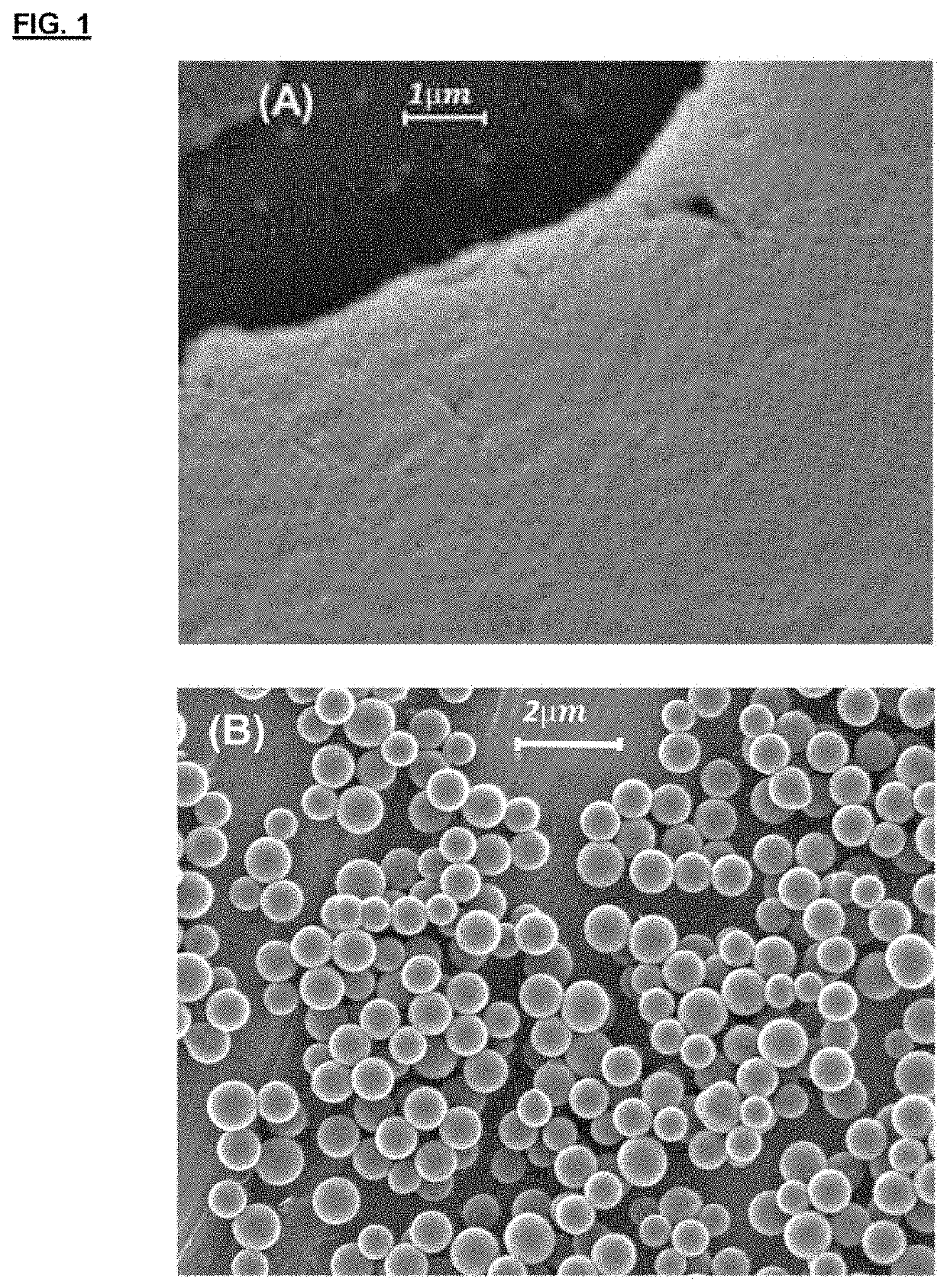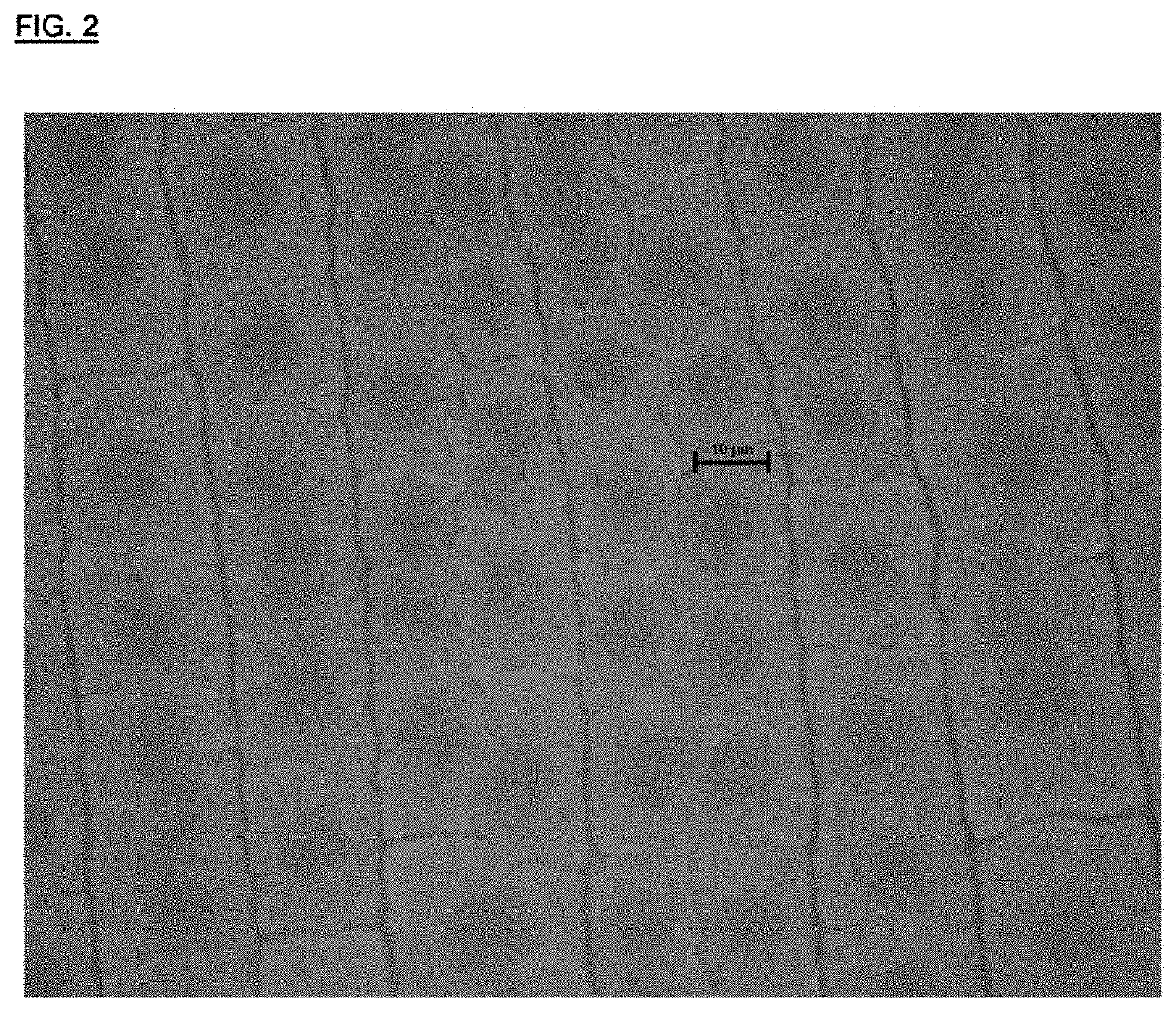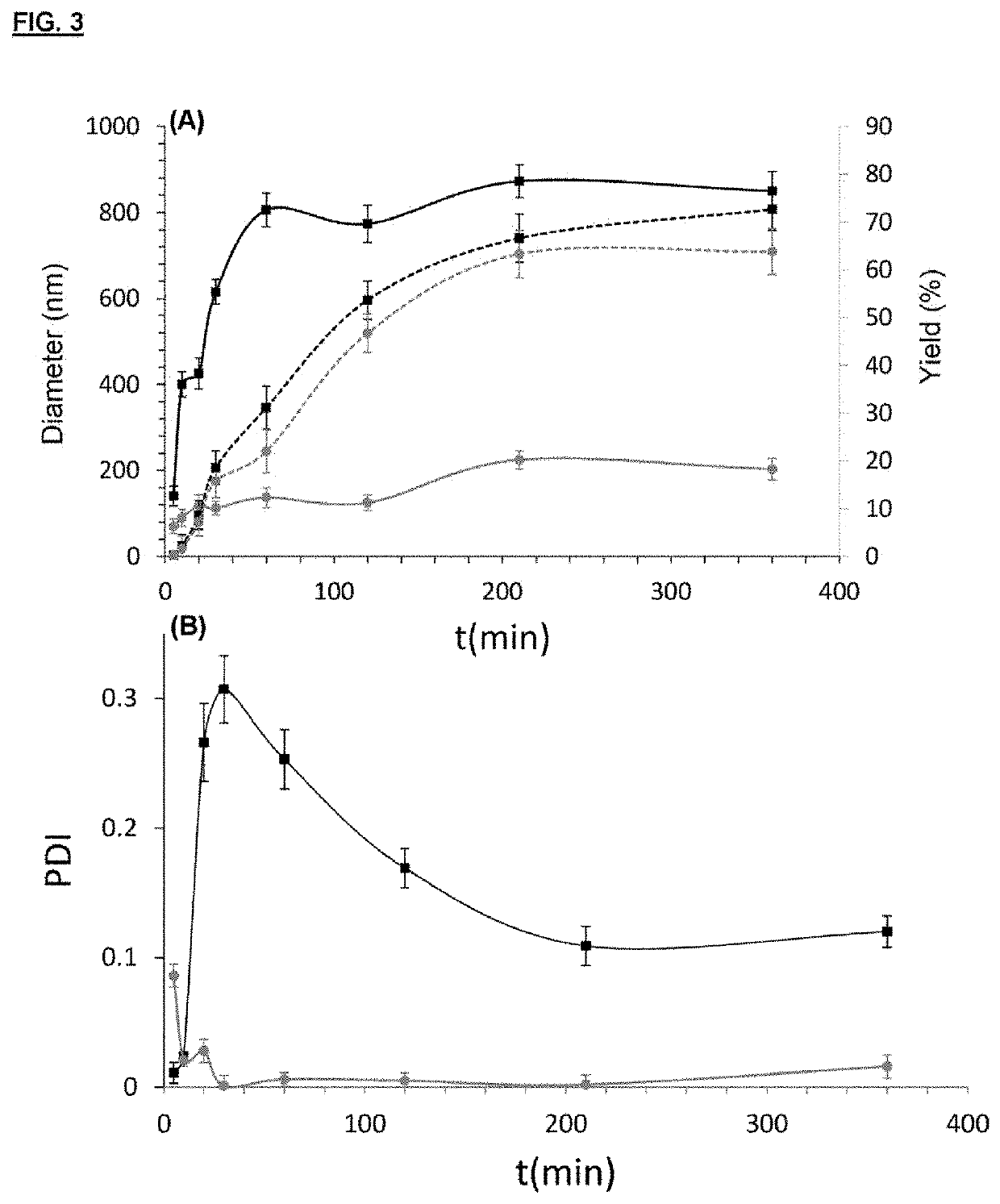Method for Obtaining Functionalised Polymer Particles
a functionalised polymer and particle technology, applied in dental prosthetics, dental prosthetics, pharmaceutical non-active ingredients, etc., can solve the problems of loss of dental pieces, inability to completely eliminate existing bacteria, and difficulty in endodontic treatment to completely eliminate bacteria in the root canal system
- Summary
- Abstract
- Description
- Claims
- Application Information
AI Technical Summary
Benefits of technology
Problems solved by technology
Method used
Image
Examples
example 1
of Polymeric Particles of Functionalized MA-Co-EDMA-Co-HEMA
[0137]Spherical polymeric particles of MA-co-EDMA-co-HEMA were prepared by means of precipitation polymerization with thermal initiation using the following monomeric system: 2-hydroxyethyl methacrylate (HEMA), methacrylic acid (MA) and the cross-linking agent ethylene glycol dimethacrylate (EDMA); in acetonitrile (ANC), using azobisisobutyronitrile (AIBN) as the thermal initiator.
[0138]The composition of the supply for the precipitation polymerization reaction as well as the experimental conditions used in the reaction are shown in the following Table 1.
TABLE 1Starting composition and experimental conditions[EDMA] mol / L0.063[MAA] mol / L0.081[HEMA] mol / L0.036[AIBN] mg / mL0.65T reaction (° C.)82% monomers vs solvent (m / m)4
[0139]Before carrying out the polymerizations, the monomers were purified and once the solutions with the monomers and the initiator were prepared, the systems were cooled and purged with N2 for 5 mins with th...
example 2
Particles Functionalized with Doxycycline to Prevent or Treat Infectious Recurrences after Endodontic Interventions
[0176]The polymeric particles functionalized with doxycycline can be obtained by functionalizing the polymeric particles previously obtained with a broad spectrum antibiotic, effective against bacteria commonly found in root canals (doxycycline). The polymeric particles functionalized with doxycycline are capable of slowly releasing the antibiotic over more than 28 days and at an effective dose as is shown below:
[0177]To functionalize with doxycycline, the spherical particles with size less than 300 nm obtained previously in the presence of SiO2 nuclei, the following protocol is followed:
[0178]30 mg of polymeric particles with size less than 300 nm were submerged in 18 mL of aqueous solution of doxycycline hyclate (Sigma-Aldrich, Darmstadt, Germany) at a concentration of 40 mg / mL, over 4 hours, under continuous agitation. The suspensions were then centrifuged, the parti...
example 3
Particles Functionalized with Zinc and with Calcium for the Treatment of Dentin Hypersensitivity
[0203]The polymeric spherical particles functionalized with Ca+2 and Zn+2 are capable of being administered topically on the surface of the dentin, they are bonded to proteins of the dentin matrix (collagen) and facilitate the remineralization thereof by way of the slow release of said ions and the attraction of calcium and phosphate which contain the biological fluids.
[0204]The polymeric spherical particles functionalized with Ca+2 and Zn+2 were obtained in the following manner: 30 mg of polymeric particles were submerged at room temperature for 3 days under continuous agitation in aqueous solutions of ZnCl2 or CaCl2), with zinc or calcium concentrations of 40 mg / L, at pH 6.5 with the aim of achieving the adsorption balance of the metallic ions. The suspensions were then centrifuged and the particles were separated from the supernatant and were dried in a vacuum oven to constant weight. ...
PUM
| Property | Measurement | Unit |
|---|---|---|
| temperature | aaaaa | aaaaa |
| particle size | aaaaa | aaaaa |
| particle size | aaaaa | aaaaa |
Abstract
Description
Claims
Application Information
 Login to View More
Login to View More - R&D
- Intellectual Property
- Life Sciences
- Materials
- Tech Scout
- Unparalleled Data Quality
- Higher Quality Content
- 60% Fewer Hallucinations
Browse by: Latest US Patents, China's latest patents, Technical Efficacy Thesaurus, Application Domain, Technology Topic, Popular Technical Reports.
© 2025 PatSnap. All rights reserved.Legal|Privacy policy|Modern Slavery Act Transparency Statement|Sitemap|About US| Contact US: help@patsnap.com



